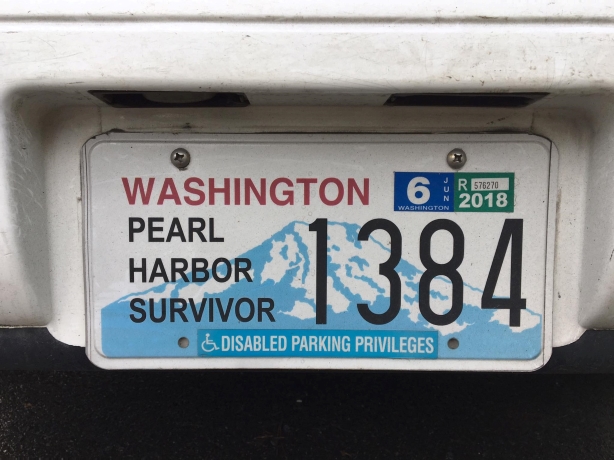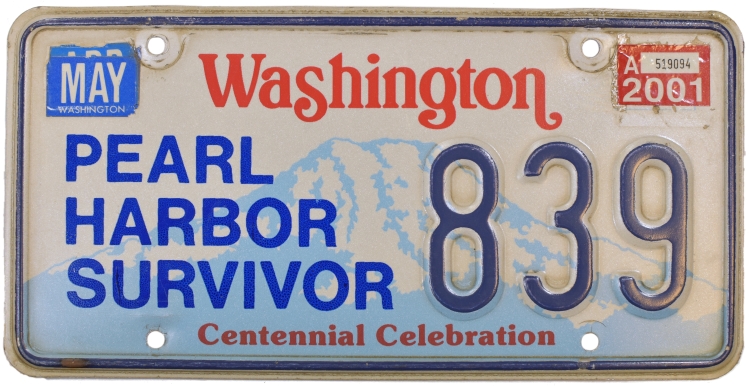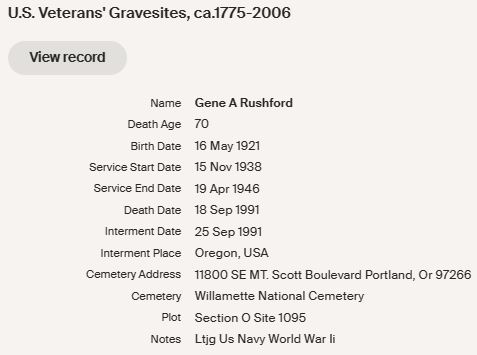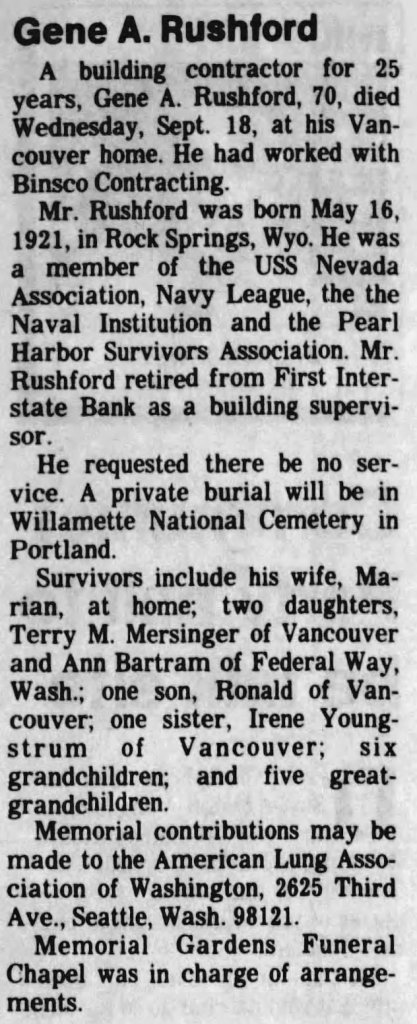As of today, 82 years have passed since the surprise attack on Pearl Harbor, and the number of survivors is steadily decreasing. One legacy of the attack and its veterans is the series of special license plates created to honor those who were present at one of the most pivotal events in American history.

While never common on the roads, the passage of time has rendered this type impossibly scarce today. The youngest Pearl Harbor Survivors are today well past normal driving age: an 18-year-old in 1941 would be turning 100 this year. Like other military-related optional plates, Pearl Harbor Survivor licenses are transferrable to a surviving spouse, helping extend the road-going years of these plates. If we haven’t already, we’ll soon reach a time where none are actively registered.
First available on July 27, 1987, Washington’s Pearl Harbor Survivor license plates joined the limited number of special plates available to military veterans (Former Prisoner of War, Disabled Veteran, and Medal of Honor Recipient). The Pearl Harbor Survivor plates were unique with their very targeted market: the entire population of Pearl Harbor Survivors was fixed and only going to decrease. Even the most exclusive special license plate in Washington (excluding elected officials), for Congressional Medal of Honor recipients, has the potential for newly eligible motorists with time.
When the legislation was finalized for the special plates in early 1987, officials estimated about 450 Washingtonians would qualify for one. To be eligible for the plate, one had to prove certification from the Pearl Harbor Survivors Association that he was on duty between 7:55 am and 9:45 am in Pearl Harbor, or offshore within a distance of three miles.
While the numbers were never large, officials were surprised by the volume of applicants, which in the first two years was approximately double the expected number. The Olympian noted on September 6, 1987 that 384 sets of Pearl Harbor Survivor license plates had been issued in the less than two months they had been available, with another 40 applications pending processing. By December 1991, at least 950 had been issued, according to the Tacoma News Tribune.
An August 1996 News Tribune profile of special license plates in Washington displayed a photo of Pearl Harbor Survivor 1098, unissued in the inventory of the Department of Licensing, indicating the revised estimate of about 1,000 survivors residing in Washington was fairly accurate. Issued numbers progressed close to 2000 over the years, driven mainly by plates being replaced and reissued.

Washington was not the first state to issue this type, and almost every state would come to offer them as well. How many can be left on the road today?
A Survivor of the USS Nevada
This example from my collection was found in an antique store in Oregon with the words “Gene Rushford, the Nevada” written on the back.


Gene Rushford had already served in the Navy for three years at the time of the Pearl Harbor bombing, having joined at the age of 17. Serving on the USS Nevada on December 7, 1941, he experienced the American involvement in World War II from start to finish, not leaving the service until 1946.

He went on to live in Vancouver, Washington for the rest of his life, passing away on September 18, 1991 at the age of 70.

Mr. Rushford’s wife, Marian, would live another 14 years, passing away on June 18, 2005. This license plate is a good case study of Pearl Harbor Survivor usage: it spent most of its time registered to the surviving spouse, rather than the survivor himself. Based on the number, it likely was first registered to Gene Rushford in mid-1991, only a few months before his death. The remaining year sticker shows 2001, although there are signs on the plate that other year stickers were removed and it could have been registered up until his wife’s death.
This well-used plate spent a good number of years on the roads as a tribute to the bravery and service of Gene Rushford and his cohorts, and having its backstory makes it an especially treasured one in my collection.